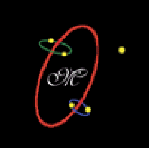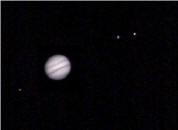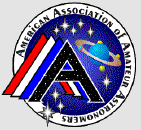
This Project Jupiter Report
was prepared by
Mizar Consulting
Eugene A. Lanning
130 Hillside Terrace
Nebraska City, NE
68410-3740
ealanni@alltel.net
Member of AAAA
AAAA
The American Association
of Amateur Astronomers
P.O. Box 7981
Dallas, TX
75209-0981
e-Mail:
aaaa@astromax.com
www.AstroMax.com
 Project
Jupiter Project
Jupiter
Abstract
Prepared by AAAA Member This Project Jupiter document describes the methods used by the American Association of Amateur Astronomers (AAAA) using observations of any of Jupiterís moons to derive their orbital period. From that derived orbital period, computations of the mass of Jupiter, the pull of gravity, and the escape velocity on Jupiter are accomplished. The methods used in Project Jupiter are general and to any planet with a moon. The methods outlined in the report are such that the AAAA members could use their existing equipment for this project and still attain reasonable results. One section of the report is devoted to a presentation based on the observations of Jupiterís four primary moons by AAAA member Tim Tyler. That section also compares their results with NASA data values for the orbital period, mass of Jupiter, etc. A suggested press release for a local newspaper is also provided. Table of Contents
|

